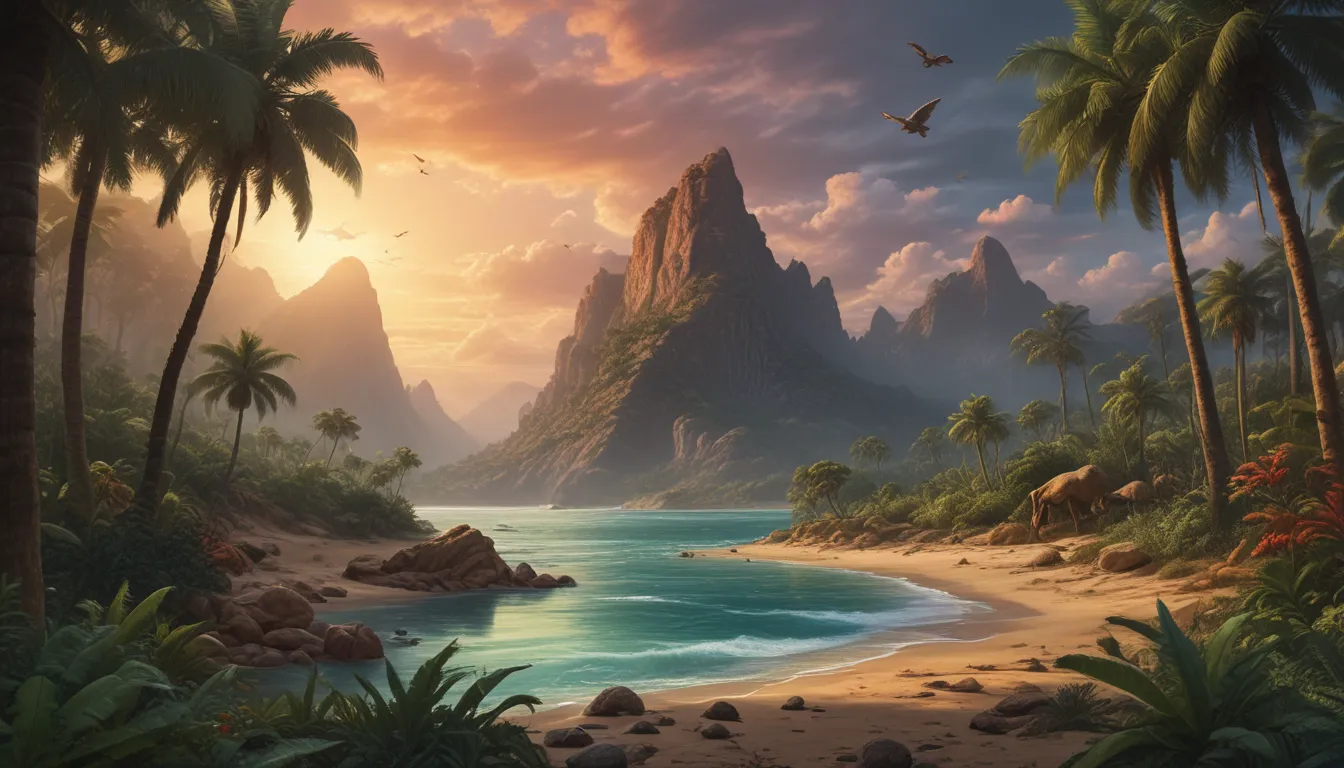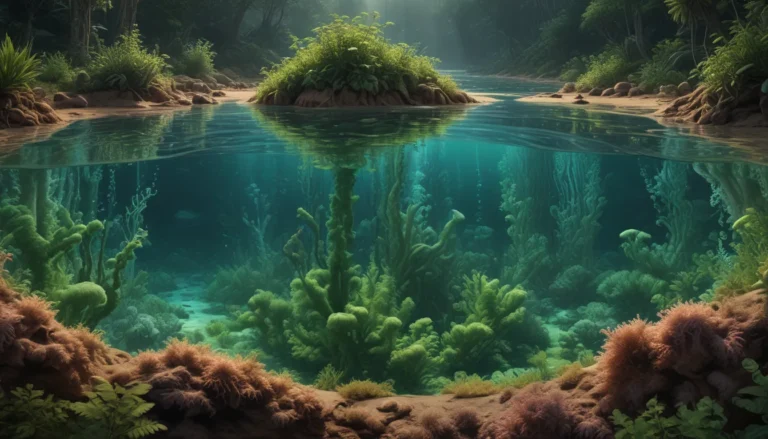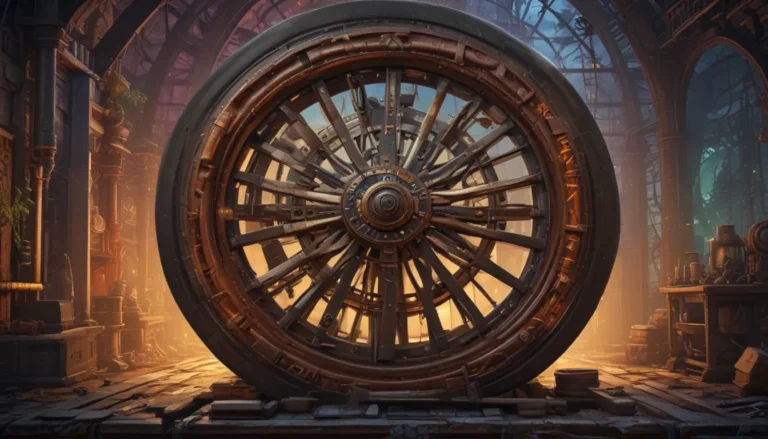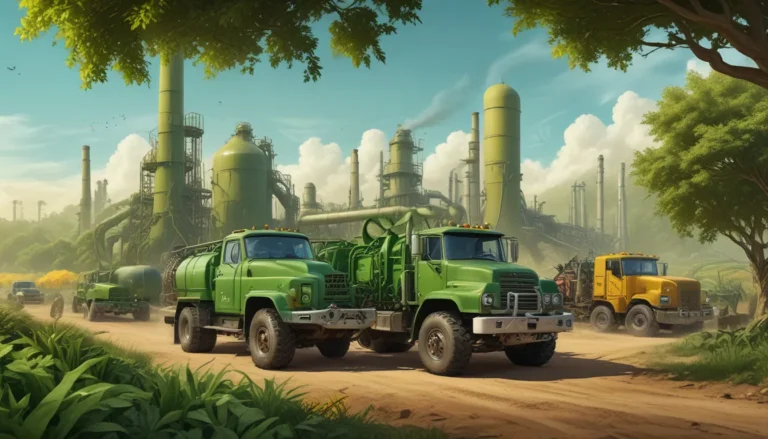A Note About Images: The images used in our articles are for illustration purposes only and may not exactly match the content. They are meant to engage readers, but the text should be relied upon for accurate information.
Welcome to a fascinating exploration of the Mesozoic Era, a period spanning from approximately 252 to 66 million years ago. Known as the “Age of Reptiles,” this remarkable era witnessed the rise of dinosaurs, the emergence of flowering plants, and the fragmentation of the supercontinent Pangaea. Join us on a captivating journey through time as we uncover 19 intriguing facts about this ancient epoch, shedding light on the awe-inspiring wonders that shaped our planet.
The Mesozoic Era: A Closer Look
The Mesozoic Era, also dubbed as the “Age of the Dinosaurs,” unfolded over three distinct geological periods: the Triassic, Jurassic, and Cretaceous. This epoch was characterized by the dominance of dinosaurs, iconic species like the Tyrannosaurus rex and the Brachiosaurus, and significant evolutionary developments that shaped Earth’s ecosystems. Let’s delve deeper into the mesmerizing world of the Mesozoic Era and unearth exciting insights that showcase the remarkable history of our planet.
Dinosaurs: The Titans of the Mesozoic Era
Dinosaurs reigned supreme during the Mesozoic Era, captivating the imagination with their colossal size and diverse forms. From the towering Tyrannosaurus rex to the gentle herbivores like the Brachiosaurus, these prehistoric giants shaped the ecosystems of their time. The Mesozoic Era witnessed the evolution and diversification of various dinosaur species, showcasing a dynamic landscape teeming with ancient wonders.
- The Mesozoic Era spanned from approximately 252 million years ago to 66 million years ago.
- It is divided into three periods: the Triassic, Jurassic, and Cretaceous.
- Dinosaurs dominated the Mesozoic Era, with iconic species like the Tyrannosaurus rex and Brachiosaurus capturing the spotlight.
- These colossal creatures played a pivotal role in shaping the Earth’s ecosystems and leaving a lasting legacy in the fossil record.
Mammals: The Rise of Tiny Titans
While dinosaurs reigned supreme, the Mesozoic Era also saw the emergence and evolution of mammals. These early mammals, small and nocturnal, occupied niches that were less accessible to the dominant reptilian species. This period marked a crucial phase in the evolutionary history of mammals, setting the stage for their eventual rise to prominence in the Cenozoic Era.
Pangaea: The Supercontinent Unravels
The Mesozoic Era marked the gradual breakup of the supercontinent Pangaea, leading to the formation of separate landmasses that would evolve into the continents we know today. This continental drift had profound implications for climate, species distribution, and ecosystem diversification, reshaping the geological and biological landscape of the planet.
Climate Fluctuations: A Dynamic Era
Throughout its duration, the Mesozoic Era experienced significant climate fluctuations, shifting from warm and humid conditions to periods of cooling and aridity. These climatic changes influenced the evolution and distribution of species, driving adaptations to diverse environmental conditions and shaping the geological features of the Earth.
Birds: From Dinosaurs to Avians
One of the most remarkable developments of the Mesozoic Era was the emergence of birds from theropod dinosaurs. Archaeopteryx, a transitional fossil, exemplifies this evolutionary transition, showcasing features of both reptiles and birds. This pivotal development laid the foundation for the astounding diversity of avian species that grace our skies today.
- Birds evolved from theropod dinosaurs during the Mesozoic Era.
- Archaeopteryx is a well-known transitional fossil that showcases features of both reptiles and birds.
- This evolutionary transition paved the way for the diversity of avian species present today.
Flowering Plants: The Botanical Revolution
Flowering plants, or angiosperms, proliferated during the Mesozoic Era, marking a significant botanical revolution. These plants played a crucial role in shaping terrestrial ecosystems, diversifying herbivorous species, and influencing plant-animal interactions. The rise of flowering plants contributed to the dynamic and vibrant landscapes of the Mesozoic Era.
Key Species: Stegosaurus, Triceratops, and More
The late Jurassic period, a pivotal juncture within the Mesozoic Era, witnessed the dominance of renowned dinosaur species like the Stegosaurus and Triceratops. These colossal herbivores roamed the Earth, leaving an indelible mark on the prehistoric landscape and capturing the imagination of future generations.
Mass Extinction: The End of an Era
The Mesozoic Era culminated in a catastrophic mass extinction event at the end of the Cretaceous period. This event led to the demise of numerous species, including the dinosaurs, reshaping the trajectory of life on Earth. The extinction of non-avian dinosaurs paved the way for the rise of mammals, marking a pivotal transition in Earth’s biological history.
Marine Reptiles: Masters of the Sea
In addition to terrestrial giants, the Mesozoic Era witnessed the evolution and proliferation of diverse marine reptiles, including ichthyosaurs, plesiosaurs, and mosasaurs. These remarkable creatures adapted to a variety of aquatic environments, showcasing the evolutionary innovations that flourished during this transformative era.
Paleontology: A Window to the Past
The discovery of the first dinosaur fossils in the early 19th century marked a watershed moment in the field of paleontology. These findings ignited a fervent pursuit of understanding prehistoric life, catalyzing a rich tapestry of scientific inquiry and discovery that continues to captivate enthusiasts and researchers alike.
Geological Formations: A Legacy Etched in Stone
The geological legacy of the Mesozoic Era is etched into the planet’s bedrock, manifesting in iconic formations like the Morrison Formation and the Solnhofen Limestone. These geological strata preserve a wealth of fossilized remains, offering invaluable insights into the ancient ecosystems and inhabitants of this bygone era.
Evolutionary Marvels: A Dinosaur Tapestry
From the ferocious Allosaurus to the colossal Diplodocus, the Mesozoic Era showcased a remarkable proliferation of dinosaur diversity. This era highlighted an array of unique adaptations and ecological niches, underscoring the evolutionary dynamism that characterized prehistoric landscapes.
Modern Impacts: Legacy Lives On
The enduring legacy of the Mesozoic Era reverberates through modern paleontological discoveries, enriching our understanding of prehistoric life. Ongoing excavations and research unveil new insights, perpetuating the allure and fascination surrounding the “Age of the Dinosaurs.”
Conclusion: A Tapestry of Evolutionary Marvels
The Mesozoic Era was a time of remarkable change and evolution, characterized by iconic dinosaurs, flowering plants, and continental shifts. This transformative era set the stage for the diverse life forms that continue to shape our world today. Exploring the Mesozoic Era offers a captivating journey into Earth’s ancient past and provides valuable insights into the forces that have shaped life on our planet.
Embark on a journey through time and uncover the wonders of the Mesozoic Era, a testament to the enduring dynamism of life on our planet.
FAQs
- What major events occurred during the Mesozoic Era?
-
The Mesozoic Era was marked by significant geological and biological events, including the breakup of Pangaea, the dominance of dinosaurs, the evolution of flowering plants, and the formation of new ocean basins and mountain ranges.
-
How did the Mesozoic Era influence life on Earth today?
- The Mesozoic Era laid the foundation for the diversity of life we see today by shaping the evolution of numerous plant and animal species. It set the stage for the ecosystems and environments that exist in the modern world.
Unravel the mysteries of the Mesozoic Era and discover the profound legacy of this ancient epoch. Join us in exploring the wonders of a bygone era that continues to captivate and inspire us today.






